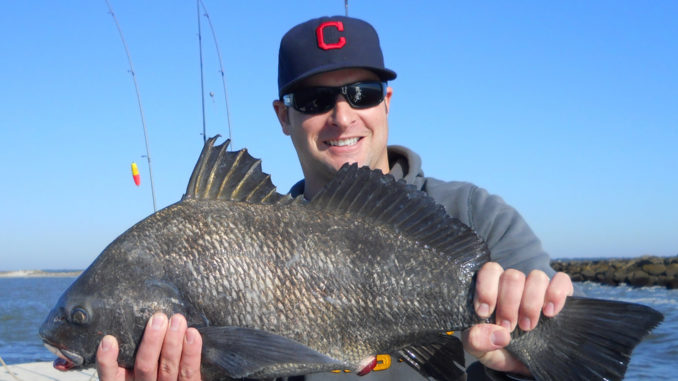
Little River black drum arriving in force
Nothing screams springtime like a 7-foot rod doubling over and line peeling off the reel like mad. As the weather heats up, so does the fishing. Anglers nestled along the northern end of South Carolina’s Grand Strand, in Little River’s backcountry, can expect a strong showing of black drum that arrive with a strong appetite.
Keith Logan of North Myrtle Beach Fishing Charters targets black drum for his clients who want to have their cake and eat it too, because black drum are the perfect combination of hard pulling and flavorful.
“They move back in from the ocean when the water starts to warm up,” said Logan (843-907-0064). “We find them concentrated in deep holes of smaller creeks where the water is 6 to 8 feet deep.”
Black drum move out of the shallow estuaries when water temperatures tumble towards winter lows. As soon as the water heats back up in spring, they begin to trickle back inside and hold up in the deeper parts of creeks.
They will eat everything from small crabs, shrimp, mussels, oysters and worms to even small fish. They definitely have a preference for small crabs and shrimp. The oyster-filled creeks in Little River’s estuaries provide an ideal place for black drum to feast during the warm-up.
When Logan loads his boat with anglers and heads to the tidal creeks, he carries enough fresh shrimp to feed an army.
“Fresh shrimp are the ticket for black drum. You will need plenty of them, because these fish are in big schools when they show up, and they are ready to eat,” he said. “Water clarity is not very important, either.”
Black drum are equipped with sensitive chin barbels that help them locate food. Logan hooks up fresh shrimp on ¼- to 3/8-ounce jigheads or a Carolina rig with ½- to 3/4-ounce barrel sinkers. Black drum are used to the bait tumbling in the current, not just lying on the bottom.
“You want the bait to roll across the bottom in the current; the best bite is right when the current is slowing down to a dead tide or starting up from a dead tide,” he said.
Anglers with access to fresh shrimp and a few hours around low tide can have a bumper day in South Carolinas coastal front.



Be the first to comment